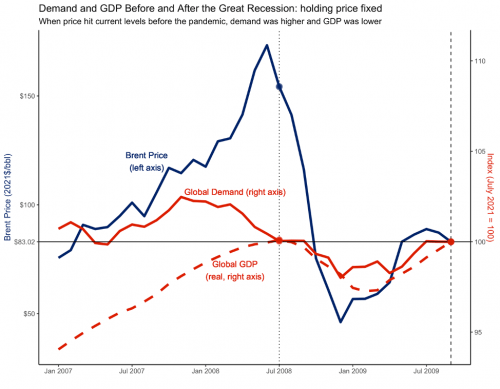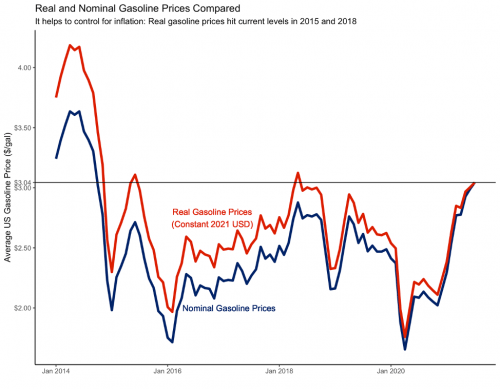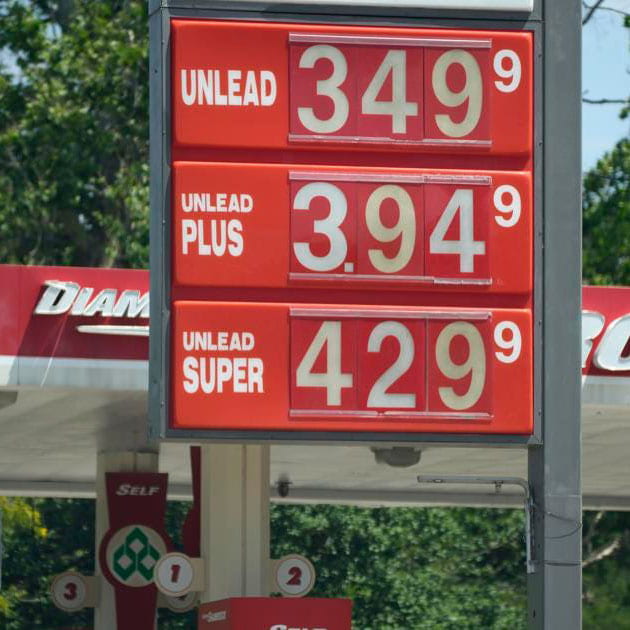Postdoctoral Fellow in Energy Transitions
Ahead of OPEC+’s September 1st meeting, the White House has called on the cartel to accelerate its plan to ramp up oil production. The Biden administration claims that the market is undersupplied and points to average US gasoline prices above $3 per gallon, a level unseen since 2014.
But OPEC and market watchers disagree. Even Biden’s own Energy Information Administration argues that oil markets are in good shape.
So, is there enough oil or isn’t there?
To answer that question, we can compare the current market to where it was before the pandemic.
The average price of Brent crude in July 2021 was $77.72 per barrel. Lucky for this analysis, oil hit that very same price just before the pandemic in 2018.
That means we can make an apples-to-apples market comparison by examining snapshots of the market when oil was trading for $77.72 before and after the pandemic.
My analysis shows that while global oil demand is down a modest 2 percent, its rebound has been robust and inflation is driving gasoline prices above pre-pandemic levels rather than a lack of oil supply from OPEC+.

| Date | Brent (2021$/bbl) | Global Oil Demand (mbpd) | Real Global GDP (2015=100) |
| July 2021 | 76.21 | 98.8 | 112.3 |
| Mar-Apr 2018 | 76.21 | 99.7 | 109.9 |
| Oct-Nov 2018 | 76.21 | 100.1 | 110.6 |
In the chart above, July 2021 is marked with a vertical dashed line and that month’s price, demand, and GDP are all demarcated with a horizontal line (demand and GDP are indexed to July 2021 levels).
We can see that price[1] hit the July 2021 figure twice in 2018 where dotted lines have been added. At both dotted lines, price was the same as in July 2021, but global demand (solid line) was higher and global GDP (a.k.a. income, dashed line) was lower.
Lower GDP typically means lower demand for oil, not higher. When we use income elasticity to estimate what demand would have been if we could fix GDP, we see a shortfall in oil demand around 2.3 percent with a back-of-the envelope calculation.[2]
How worried should we be about a meager 2.3 percent shortfall? While demand is a little low, 19 months after the pandemic decimated global income (and oil demand), the world is generally back to pre-pandemic levels of both GDP and oil consumption. This is despite myriad of travel restrictions and many employees around the world forgoing their daily commute, both dampening gasoline, and hence oil, demand.
And oil demand typically does not bounce back as quickly as GDP following recessions, partially because of lags in money getting into consumers’ pockets and partially because GDP recovery rarely coincides with average wage recovery; even though global GDP is back where it was, the average consumer is still earning less than before the pandemic.

| Date | Brent (2021$/bbl) | Global Oil Demand (mbpd) | Real Global GDP (2015=100) |
| July 2008 | 151.27 | 86.3 | 82.6 |
| July 2009 | 87.13 | 86.3 | 81.8 |
| August 2009 | 85.52 | 86.3 | 82.2 |
| September 2009 | 81.41 | 86.3 | 82.6 |
Let’s take some perspective here from the 2008 recession, charted out in the same fashion as the pandemic above. GDP and oil demand recovered in 14 months following the 2008 recession (peak-pre recession marked with a dotted line, recovery with a dashed line), five months faster than the same recovery took during the current pandemic. However, there’s a huge difference: in 2008, oil demand recovery was assisted by prices falling 46 percent over those 14 months.
In short, our current 2.3 percent shortfall in oil demand was achieved with prices at pre-pandemic levels. To hit a similar level of recovery after the 2008 required prices for oil to fall by nearly half. That sounds like a pretty robust recovery in the oil markets.

But if oil markets have rebounded to 2018 conditions, why are gasoline prices hitting highs we haven’t seen for half a decade? It’s a matter of inflation—which has reached annualized rates over 5 percent for the past five months—combined with a fluke that gasoline prices almost reached $3 a gallon back when crude oil was trading in the $70-$80 per barrel range in 2018 and 2015. If one controls for inflation, gas prices are as high now as they were then…. just like crude oil. The figures are charted out above where nominal gasoline prices stay below July 2021 levels ($3.04) from late 2014 to the present, but real gasoline prices cross that line in 2018 and 2015.
Of course, Americans are concerned when they have to pay $3 for a gallon of gas especially given that wages are still recovering from the pandemic. And of course, the White House needs to be seen doing something about that. Ironically, the inflation is an unfortunate side effect of the Biden administration’s efforts to grow back stronger. Inflation has been high for the past five month because the government is pouring trillions of dollars into the economy. To make matters worse, past research from the Baker Institute has shown that a weak dollar often accompanies high oil prices.
But there’s little OPEC and its partners can do to address the underlying issues of high inflation and low wage growth. That’s not something oil markets can correct. Given recent demand uncertainty arising from the Delta variant of Covid-19 and depressed prices in August relative to July, it’s unlikely OPEC and its partners heed the Biden administrations calls to accelerate their production plan. In the upcoming meeting they will most likely agree to stay the course adding 400,000 barrels of production per day each month, a process they already began in August.
This post originally appeared in the Forbes blog on August 31, 2021.
[1] Price inflation is controlled for with constant 2021 dollars.
[2] Demand is down 1.1 percent while global GDP is up 1.8 percent. Golombek et al (2018) estimates a global income elasticity of crude oil demand at .64, so a 1.8 increase in GDP should result in a .64 * 1.8 = 1.2 increase in demand. So, the gap in expected demand and observed demand 1.1+1.2 percent = 2.3 percent.
